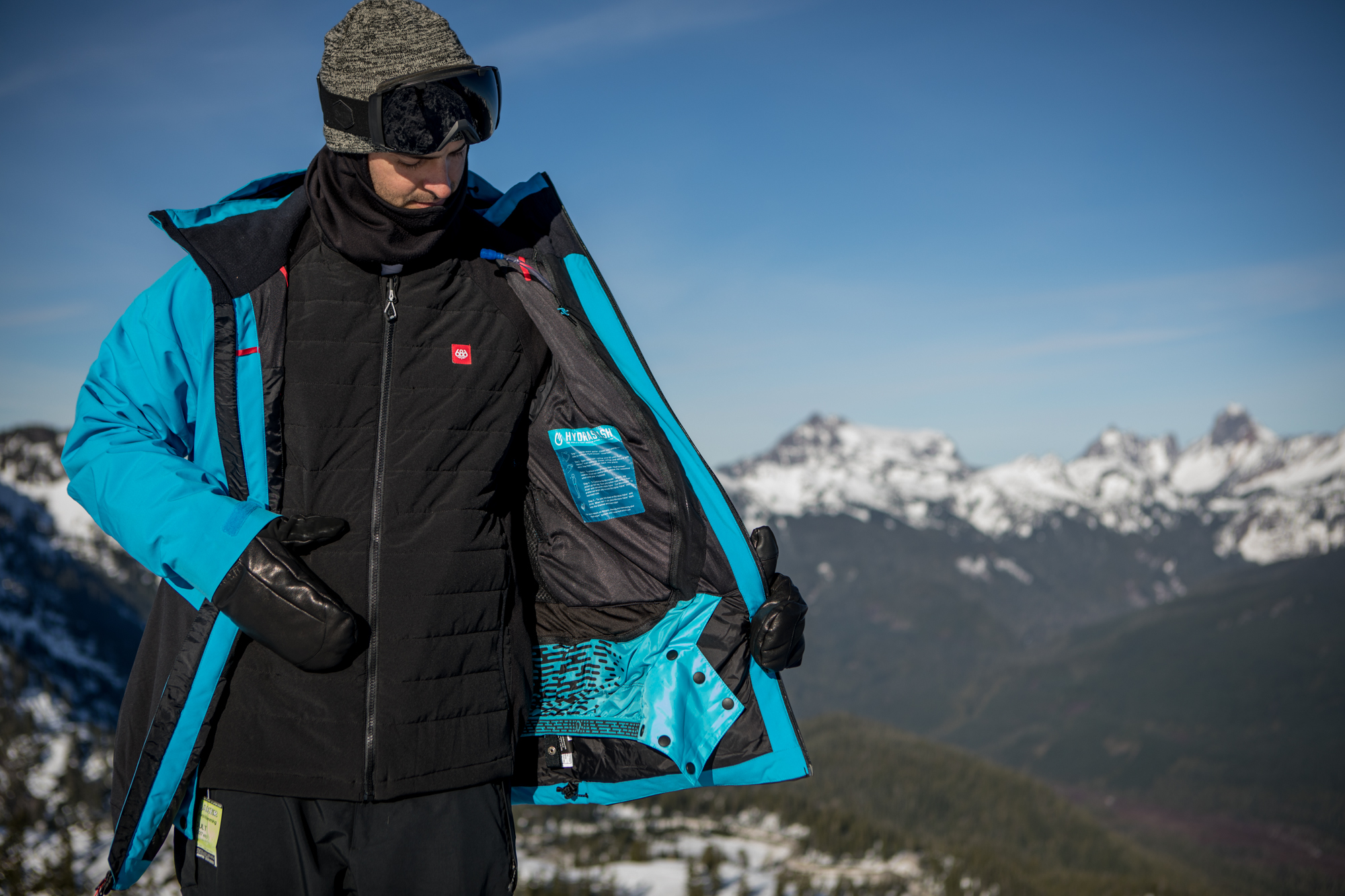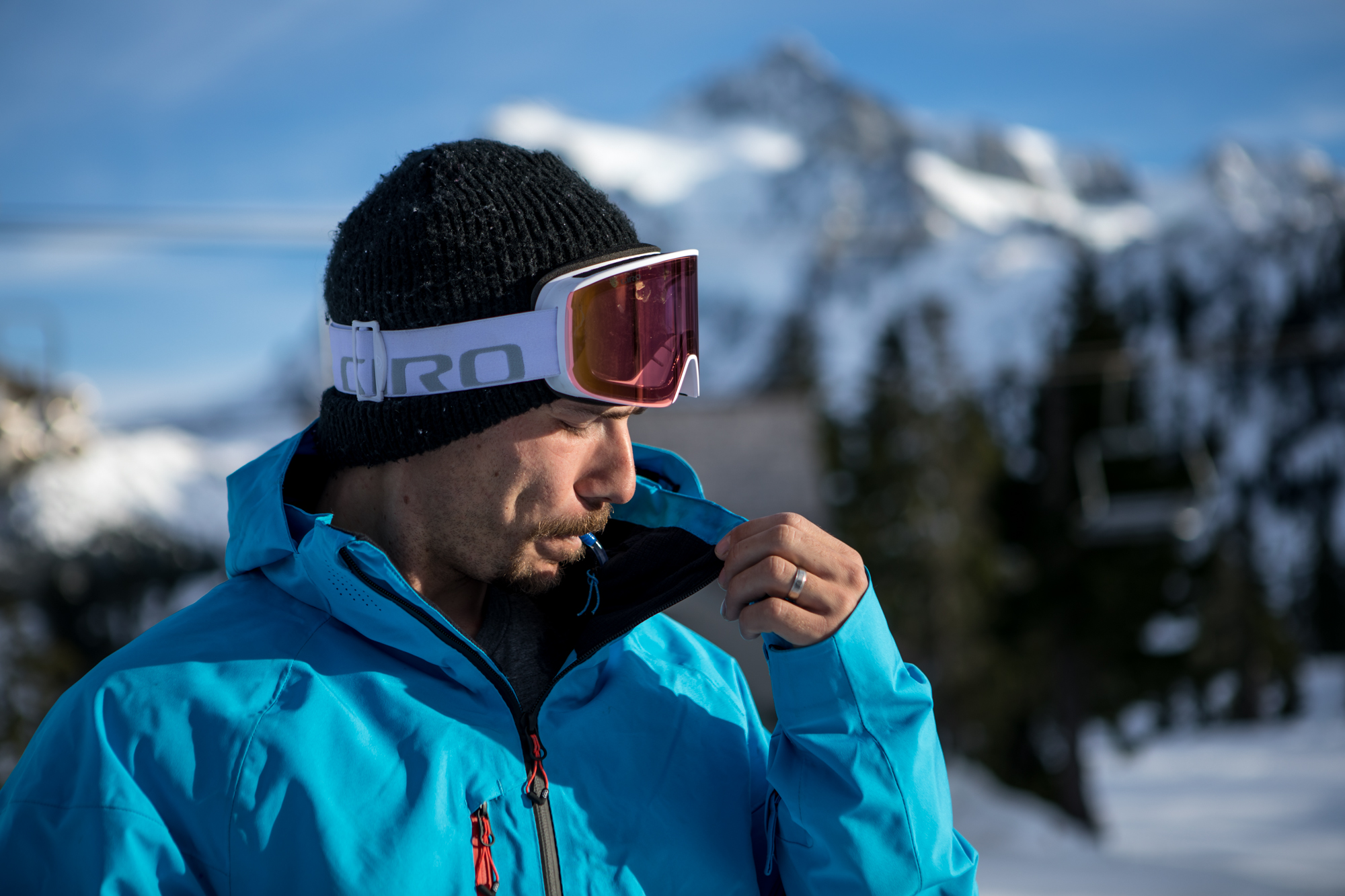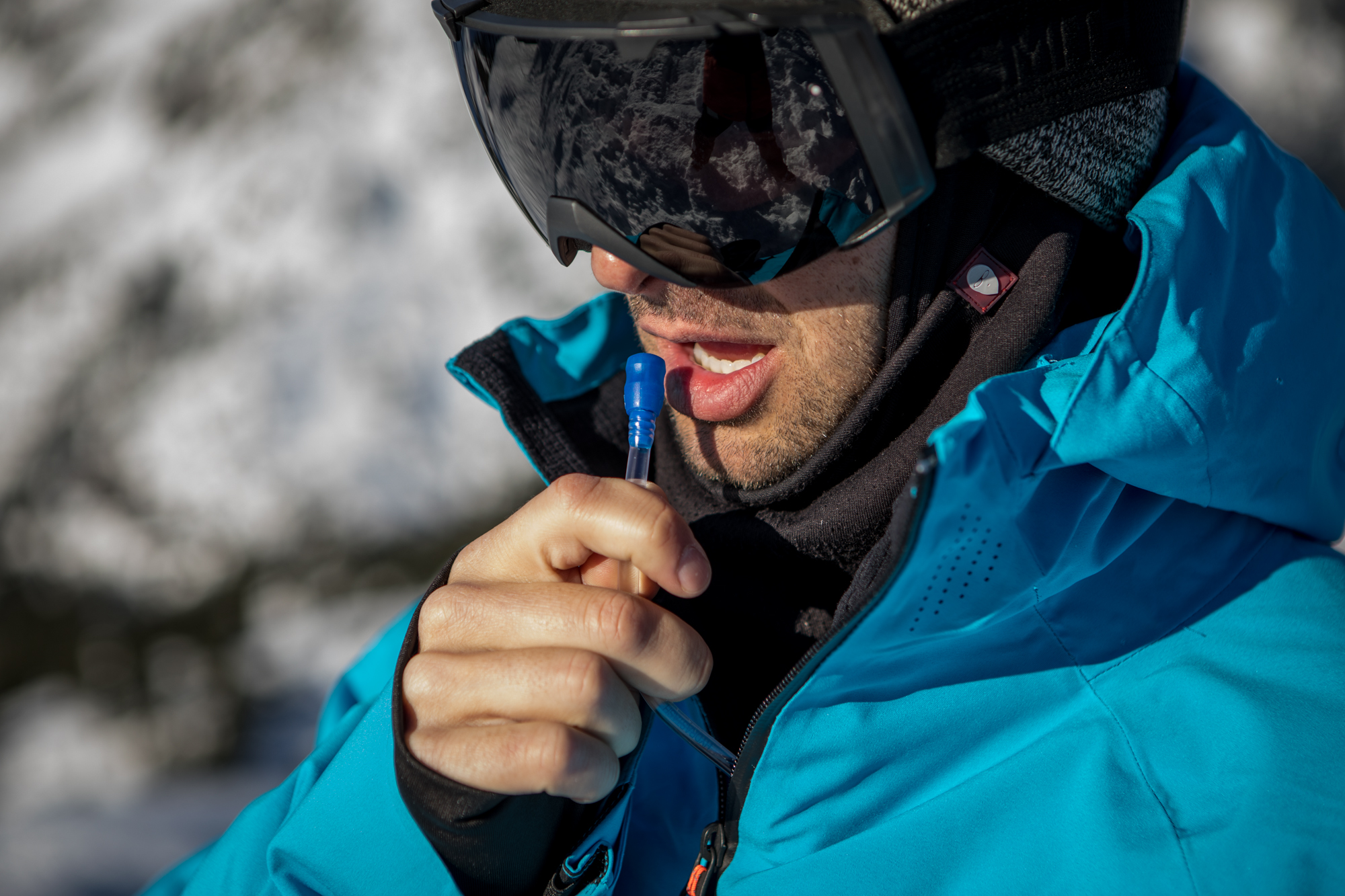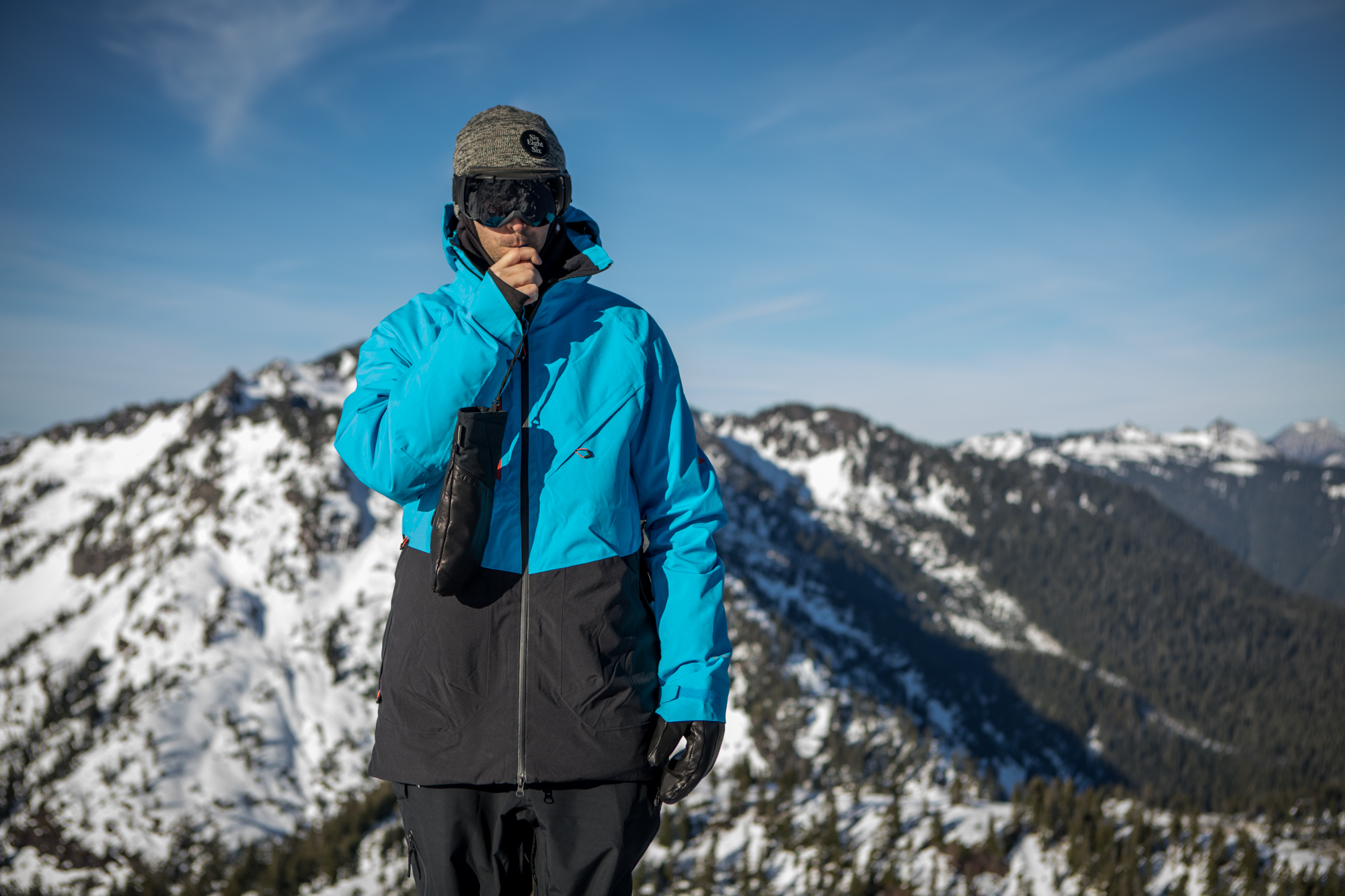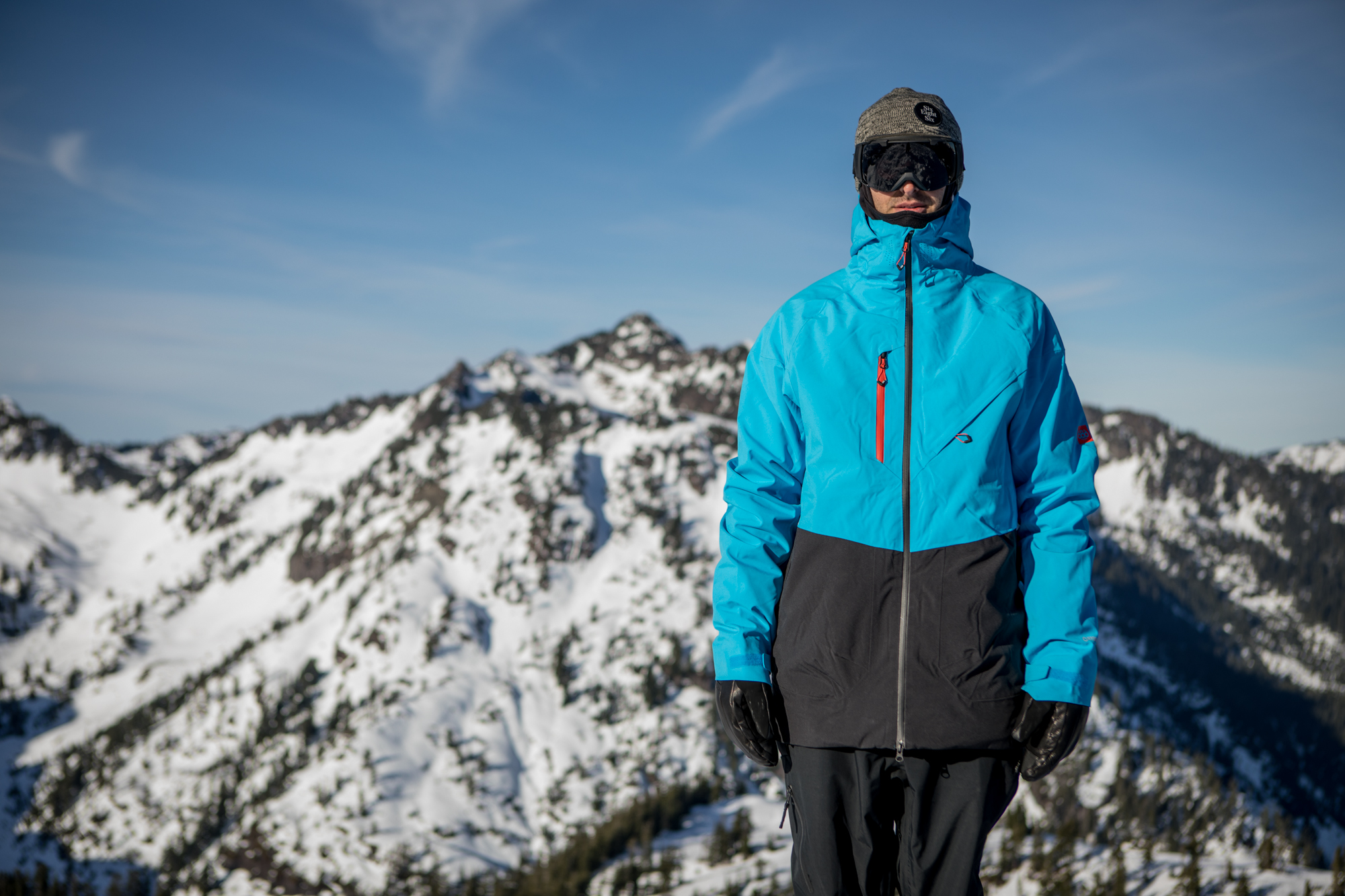For this winter’s Outdoor Retailer show in Denver, Digital Trends teamed up with The Manual to crown the greatest outdoor gear as our Best Of Show winners, along with four awards going to the most innovative products. Head on over to The Manual to see the complete Outdoor Retailer Awards.
Staying hydrated while skiing or snowboarding is important, but the dilemma of where to stash a water bottle or bladder remains a constant issue. Backpacks tend to be cumbersome, and riding a chairlift with one is even less comfortable. Plus, the lines in hydration bladder backpacks tend to freeze, leaving you with a solid chunk of undrinkable ice. This is exactly where the built-in hydration sleeve in 686’s Hydrastash Jacket would come in handy, and why we crowned it a Digital Trends Innovation Award winner.
The Hydrastash is a clever new micro-hydration system that fits around your waist rather than on your back, freeing up space on the chairlift and allowing you to ski or snowboard completely backpack-free. And because it hugs your body inside a coat, the tube won’t freeze — even in the coldest of conditions.
More 2018 Outdoor Retailer Award Winners
- LifeStraw Lead
- Spy Ace EC goggles
- Capita Spring Break snowboards
- Also check out The Manual’s winners
The hands-free system, which launched at this year’s show after four years of research and development, is currently built into 686’s GLCR Reservoir jacket. The system integrates with the jacket’s powder skirt to provide 25 ounces of available hydration — the equivalent of about a mid-sized water bottle. When you snap your skirt up, the hydration pack shifts onto your waist, maintaining an even center of gravity and moving along with you as you ride.
Anti-slosh dams within the bladder help prevent motion when fluid is low, and lifts any noticeable weight, resulting in a ride down the mountain that feels free and unencumbered by bulky packs. The reservoir itself is constructed with material so strong it can be run over by a small car without bursting, so you don’t have to worry about hard falls breaking the bladder, and the tube has a self-sealing Microbite valve with a steady, strong flow rate.
The jacket itself is built with waterproof infiDRY 20K stretch fabric, fully taped Bemis seams, and 80g ultra-warm polyfill in the body. For now, Hydrastash is only available in the GLCR Reservoir, however, the company may integrate the patent-pending technology with other products down the line.


